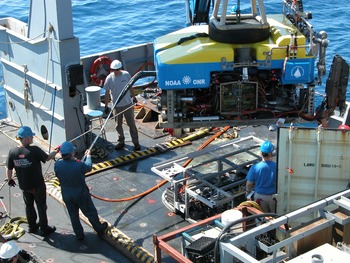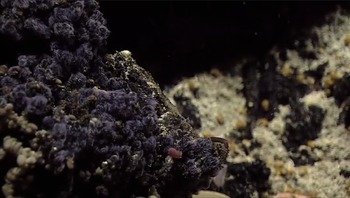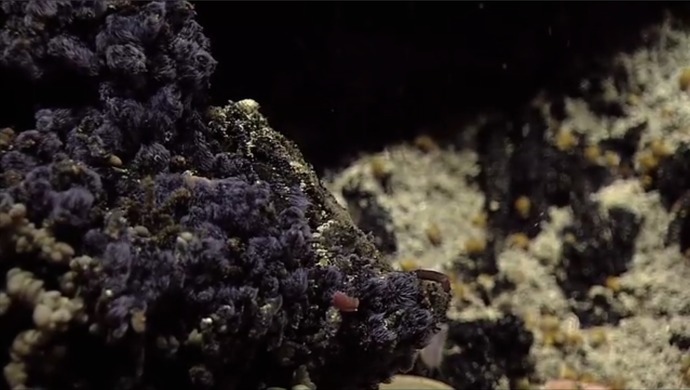Tonight Jason Dive J2-517 will go into the water at ~ 2000 h with the goal of drilling a small hole (3 inches in diameter) into an active sulfide chimney. Following recovery of Jason at ~0900 this morning, much of the day was spent preparing the vehicle for the drilling efforts. The core barrels and bits to be mounted on the vehicle were examined in detail and all systems thoroughly checked out to ensure that operations will go smoothly at a water depth of 1450 m (nearly a mile beneath the ocean's surface). Based on an earlier, highly detailed imaging survey of the International District, we have chosen the structure called "El Guapo" as a drilling target. This structure hosts dense biological communities on the outside of the vent, but what grows within its walls is a mystery.
Environmental conditions in the walls of black smoker chimneys are some of the most extreme on Earth. The porous interior walls are flushed with acidic, oxygen-free fluids that are in excess of 300°C at pressures >200 times those experienced on the surface. Microbes have developed novel mechanisms to live within these environments. The highest temperature vent organism cultured in the lab grows at temperatures of 121°C (250°F). Many of these "extremophiles" have high tolerances for toxic metals and some even help precipitate metals from solution.
By drilling into the walls of El Guapo and recovering cores, we will be able to examine the conditions under which organisms thrive, survive, and expire within these novel environments. During follow-on shore-based analyses we will study the genetic make-up of organisms retrieved from the cores to understand how microbial community structure changes from the hot inside of the chimney to the high-energy environment in the outer walls. We will also insert a temperature probe to make long-term temperature measurements inside the wall, and will sample a very young sulfide chimney to understand how microbial assemblages change over time. This work will be the focus of University of Washington graduate student Monica Kerr-Riess.




